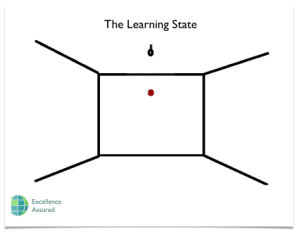Turn off that internal chatter – NLP
Do you ever have times when you find it difficult to relax due to your overactive mind? Don’t worry, I won’t tell anyone!
We constantly play mini picture-shows or movies in our head, recalling past events, recalling past conversations, hearing the audio from the conversation over and over. Either we are recalling or remembering events from the past, or we are rehearsing or planning for events or conversations in the future.
Now, there is a bit of a stigma around this subject. Since if you recall the conversations, or rehearse them out loud then people will say that you are going mad. We have all seen people wandering down the street muttering to themselves!
So we are going to keep this between ourselves. Ok? You are not going mad. We all do it, it’s just that most of us keep it internal and do not broadcast our thoughts!
Some of the time this internal dialogue is really useful. It allows us to learn from past successes, so that we can replicate them in the future. It allows us to learn from past mistakes, so that we do not replicate them in future. It helps us plan and rehearse for future events to make sure that we achieve our goals.
The problem is, how do you switch it off when you do not need it?? It becomes less useful when we keep repeating the same old picture-shows, the same old movies, the same old conversations. It is especially troublesome when we keep going over negative past events or events that are likely to happen in the future that we perceive as being negative.
NLP as a body of knowledge gives us techniques to enable us to re-programme our internal chatter where necessary to take positives from the past and foresee successes rather than failures in the future. We cover this on our NLP training courses.
Sometimes it is not convenient to have this internal dialogue, for example when you want to relax, or when you want to learn something. For occasions like that NLP has borrowed a technique from Hawaii, called the Hakalua which comes from ancient Huna. In NLP we call it The Learning State.
The Learning State is absolutely sure to help you in a learning environment to concentrate on learning. It is sure to help the knowledge go straight in and to stay there. We teach it to children, and it never fails to help them improve their grades.
Here’s what you do to get into the Learning State:
Facing straight ahead, pick a spot on the wall to look at. Ideally the spot will be above eye level so that your field of vision seems to rest up against your eyebrows, leaving you with full vision.
As you stare at this spot just let your thoughts come and go, and focus all your attention on this spot.
Notice as you stare at the spot that within a few minutes your vision begins to spread out. Allow it to continue to do that. You begin to see more in your peripheral than you do in the central part of your vision.
Now, pay attention to the peripheral. Pay more attention to the peripheral than to the central part of your vision.
If you are looking at a wall, begin to notice that you can see the corners of the room, the ceiling and the floor, all without moving your eyes.
In fact, you can even begin to pay attention to things that are going on behind you if you notice carefully.
As you stay in this state, notice how you feel, notice what you can see.
How did you get on with that? Most people feel a sense of relaxation and heightened awareness, they become aware of things that they hadn’t noticed before.
Did you turn off your internal chatter? It is impossible to keep running those internal though patterns when you are in this “Learning State” because the technique switches all of your attention to what is going on outside of you.
By switching your attention from part internal thoughts, part external awareness to 100% attention in the external environment you are able to take in far more of what is going on. This means that you relax into your environment and you are able to improve your retention of any learning that you may be doing. Hence “The Learning State.”
So, when you want to relax, when you want to learn, when you want to turn off that internal chatter, you now know what you can do.

